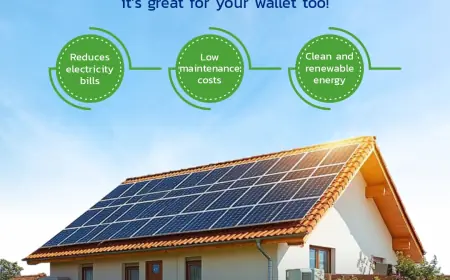North America Tumor Ablation Market
North America Tumor Ablation Market Size, Share, Trends, Growth, Key Players, & Future Forecast | 2025 - 2034

The North America tumor ablation market, valued at approximately USD 0.71 billion in 2023, is poised for significant growth over the forecast period. This growth is primarily driven by the increasing prevalence and incidence of cancer in the region. The market is expected to expand at a compound annual growth rate (CAGR) of 12.30% from 2024 to 2032, with the value rising from USD 0.79 billion in 2024 to an estimated USD 2.01 billion by 2032. Tumor ablation techniques, which include radiofrequency, microwave, and cryoablation, offer promising alternatives to traditional cancer treatments, attracting increasing demand for minimally invasive procedures.
This article delves into the factors driving the growth of the tumor ablation market in North America, the key players shaping the market, and answers to some frequently asked questions about the industry.
Overview of Tumor Ablation
Tumor ablation is a medical procedure used to treat malignant tumors by destroying the cancerous cells through various energy sources. Unlike traditional surgical approaches, tumor ablation is minimally invasive and involves targeted destruction of the tumor without the need for large incisions. The main types of tumor ablation techniques include:
- Radiofrequency Ablation (RFA): This technique uses electrical currents to generate heat, which destroys tumor cells.
- Microwave Ablation (MWA): MWA utilizes electromagnetic waves to heat and destroy tumor tissue.
- Cryoablation: This method freezes tumor cells, causing them to die.
- Laser Ablation: Laser beams are used to shrink or destroy tumors.
These techniques are primarily used for tumors in the liver, kidneys, lungs, and prostate, among other areas. The growing preference for these minimally invasive treatments is attributed to their lower risk profiles, reduced recovery times, and fewer complications compared to conventional surgical procedures.
Get a Free Sample Report with Table of Contents : https://www.expertmarketresearch.com/reports/north-america-tumor-ablation-market/requestsample
Market Drivers
1. Rising Cancer Prevalence
Cancer remains one of the leading causes of death in North America, with thousands of new cases being diagnosed every year. According to the American Cancer Society, over 1.9 million new cancer cases are expected to be diagnosed in the U.S. alone in 2024. As cancer rates continue to climb, there is an increasing need for advanced and effective treatment options like tumor ablation, particularly for patients with localized tumors.
2. Advancements in Ablation Technologies
Technological advancements in tumor ablation are improving the efficacy and safety of these procedures. Real-time imaging guidance (such as ultrasound, CT, and MRI) enhances precision, helping to ensure that the ablation targets only the tumor tissue while sparing surrounding healthy tissues. Moreover, minimally invasive ablation devices are becoming more sophisticated, further reducing the risk and improving patient outcomes.
3. Preference for Minimally Invasive Procedures
The growing demand for minimally invasive procedures is another key driver of the tumor ablation market. Tumor ablation procedures are less invasive than traditional surgery, meaning patients experience less pain, a shorter hospital stay, and faster recovery times. This is particularly appealing to patients who wish to avoid major surgery and its associated risks.
4. Rising Awareness and Healthcare Infrastructure
With the increasing awareness about various treatment options and advancements in healthcare infrastructure in North America, more patients and healthcare providers are turning to tumor ablation therapies. Furthermore, the expansion of outpatient centers and hospitals equipped with state-of-the-art facilities to conduct these procedures is likely to spur market growth.
5. Reimbursement and Insurance Coverage
The availability of insurance coverage and favorable reimbursement policies for ablation therapies is another factor accelerating the adoption of these procedures. As insurance companies increasingly cover tumor ablation treatments, more patients can afford these procedures, further boosting market growth.
Market Segmentation
1. By Type
- Radiofrequency Ablation (RFA)
- Microwave Ablation (MWA)
- Cryoablation
- Laser Ablation
2. By Application
- Liver Tumors
- Kidney Tumors
- Lung Tumors
- Prostate Cancer
- Others
3. By End-User
- Hospitals
- Outpatient Centers
- Cancer Research Institutes
4. By Geography
- United States
- Canada
5. By Procedure
- Open Surgery Ablation
- Per-cutaneous Ablation
- Laparoscopic Ablation
Market Outlook
The North American tumor ablation market is expected to witness substantial growth during the forecast period due to the factors discussed above. However, challenges such as the high cost of advanced ablation devices and the need for skilled healthcare professionals may impede market growth to some extent.
- United States: The U.S. will continue to dominate the North American tumor ablation market, owing to its large cancer patient population, advanced healthcare infrastructure, and high adoption of innovative medical technologies.
- Canada: Canada is also seeing a rise in the adoption of tumor ablation techniques, supported by a robust healthcare system and increasing government investments in cancer treatment.
Key Players in the North America Tumor Ablation Market
The market for tumor ablation in North America is highly competitive, with several leading players involved in the development, production, and marketing of ablation devices and technologies. Some of the key players include:
-
Medtronic PLC
Medtronic is a global leader in medical technologies, offering advanced radiofrequency and microwave ablation devices. Their product portfolio includes systems like the Visualase Thermal Therapy System, which is used for minimally invasive treatment of tumors. -
AngioDynamics Inc.
AngioDynamics provides various tumor ablation technologies, including radiofrequency ablation (RFA) systems. Their products, such as the Emprint Microwave Ablation System, are used for treating cancers in the liver, kidney, and other organs. -
Johnson & Johnson
Through its Ethicon division, Johnson & Johnson offers a range of medical devices, including radiofrequency and microwave ablation technologies used in oncology treatments. -
Boston Scientific Corporation
Boston Scientific manufactures the Sonicision™ Disposables, used in various tumor ablation procedures. The company focuses on improving patient outcomes through precision treatments. -
Hologic, Inc.
Hologic is known for its cryotherapy and tumor ablation solutions, which are particularly useful in the treatment of breast and prostate cancer. -
RITA Medical Systems (a subsidiary of C. R. Bard, Inc.)
RITA Medical Systems offers several ablation devices, such as the RITA® System for performing RFA on liver and kidney tumors. -
Varian Medical Systems
Varian, a leader in radiation therapy, is increasingly exploring innovative treatment options such as ablation technologies in its offerings for oncology patients.
FAQs
1. What is Tumor Ablation?
Tumor ablation is a minimally invasive procedure used to treat tumors by destroying cancer cells using energy such as heat, cold, or microwave radiation. Common techniques include radiofrequency ablation (RFA), microwave ablation (MWA), and cryoablation.
2. What types of cancers can be treated with tumor ablation?
Tumor ablation is typically used to treat cancers in the liver, kidneys, lungs, prostate, and bone. It is most effective for smaller tumors or those that are difficult to reach with traditional surgery.
3. How long does recovery take after a tumor ablation procedure?
Since tumor ablation is minimally invasive, the recovery time is generally shorter than for traditional surgery. Most patients can return to normal activities within a few days, depending on the procedure and their overall health.
4. Is tumor ablation a permanent cure for cancer?
Tumor ablation is not necessarily a cure for cancer but can be used to control or shrink tumors, particularly in early-stage cancers or when surgery is not possible. In some cases, it may be used alongside other treatments like chemotherapy or radiation.
5. How does the market for tumor ablation in North America look?
The North America tumor ablation market is expected to grow from USD 0.71 billion in 2023 to USD 2.01 billion by 2032, driven by the rising incidence of cancer, technological advancements, and the increasing demand for minimally invasive procedures.
6. What are the advantages of tumor ablation over traditional surgery?
The primary advantages of tumor ablation include reduced hospital stays, lower risk of infection, minimal scarring, and faster recovery. It is especially suitable for patients with tumors that are difficult to access through conventional surgery.
What's Your Reaction?
 Like
0
Like
0
 Dislike
0
Dislike
0
 Love
0
Love
0
 Funny
0
Funny
0
 Angry
0
Angry
0
 Sad
0
Sad
0
 Wow
0
Wow
0





















































